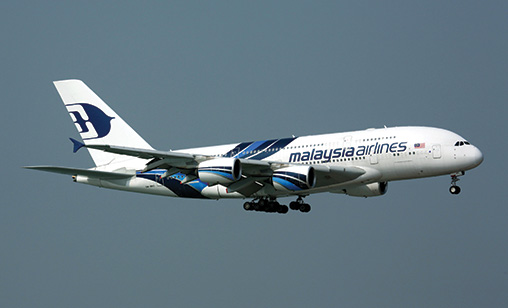News Backgrounder
Pace quickens at MAB as the carrier plans its A380 pilgrimage airline
December 1st 2016
Within Malaysia Airlines (MAB), the planned high density spin off airline the flag carrier eventually hopes to sell on is called Project Hope. Read More »
But the Irish-born group managing director of MAB, Peter Bellew, wondered aloud last month if a better label might be Project Faith. Whatever it is called, the carrier’s six A380s will be configured with 650-700 seats by the end of 2018. They will form the fleet of a soon to be created MAB subsidiary dedicated to carrying Muslim pilgrims to Mecca for the Hajj and the Umrah.
 |
The as yet un-named airline will have its own Air Operators Certificate (AOC), probably by the second half of next year, said Bellew. After “giving birth” to the new operator, MAB wants to invite outside investors to take it over.
Hajj and Umrah traffic is pretty much predictable over the next twenty years and is growing incredibly fast. It is estimated pilgrimage passengers will reach 30 million in the next decade, he said.
An additional advantage of a dedicated carrier is that the pilgrimage season extends beyond the Hajj - which is compulsory for all able-bodied Muslims and takes place during the last month of the Islamic calendar. The Umrah, sometimes called the “lesser pilgrimage”, is not compulsory but runs for seven or eight months of the year.
After MAB committed to letting the A380s to go, it looked at several options for their disposal, including a straight out sale or wet leasing. “For us, the A380 is too big for the London route. It’s four engines are thirsty,” said Bellew. He also decided it was too early for a viable A380 secondary market to exist.
MAB has signed a long-term lease for four A350-900s and options on two more. They will replace the A380s at the carrier when they begin arriving in the fourth quarter of next year.
MAB’s strategy for its A380s did not mean he thought the aircraft type was a white elephant, Bellew said. “I describe them internally as spaceships. They are not really aircraft. They are like a space shuttle or something. MAB has just completed “C” checks on its A380 fleet. As each aircraft has been going through the hangar I had a peek, crawling all over the whole aircraft,” he said.
 |
“I don’t know what they were planning to do with them when they built them, but they are put together in the most incredibly strong way. They are showing no signs of wear and tear at all. I think they will be a bit like the Boeing 707s, which are still flying today. I think a lot of A380s will still be flying in 40 or 50 years.”
Bellew revealed his pilgrimage carrier plans not long after Airbus chief operating officer - customers, John Leahy, said he stood by the A380, despite its poor sales in the last two years.
Leahy said two different markets were emerging for the A380: new and used.
“My argument is there are certain markets that will want new and some that will want used. Some of Tim Clark’s (Emirates Airline president) used A380s create big marketing opportunities. You will see the market expanding to new operators,” said Leahy.
He also said that the long discussed possibility of a re-engineered neo version of A380, which Sir Tim Clark would like in his fleet, would only be built when the time was right. It was inevitable that more carriers would order the A380, not only because of growing airport and airways congestion but because customers clearly prefer flying on the plane, he said.
| Moving fast at Malaysia Airlines Continuing its recovery under the leadership of Peter Bellew, Media reported last month that Malaysia Airlines Berhad (MAB) was weighing an order for either B787s or A330neos in 2017 and also was considering fine tuning its narrow body strategy. The 78 aircraft carrier could place an order for up to 25 A330neos or B787s, said industry consultancy, CAPA, in a decision that would include replacement of its 15 A330ceos. Its fleet of B737s also is being reviewed as better utilization has meant fewer of the type is needed. CAPA said some B737-800s will be reconfigured with business class seats and others would be converted to an all economy layout. MAB, which has announced eight new destinations in China, also will introduce a second daily Kuala Lumpur-Shanghai service. Projected seat capacity at MAB is planned to increase by up to 10 per cent next year after its new marketing campaign, offering very competitive fares across the region, is launched. |